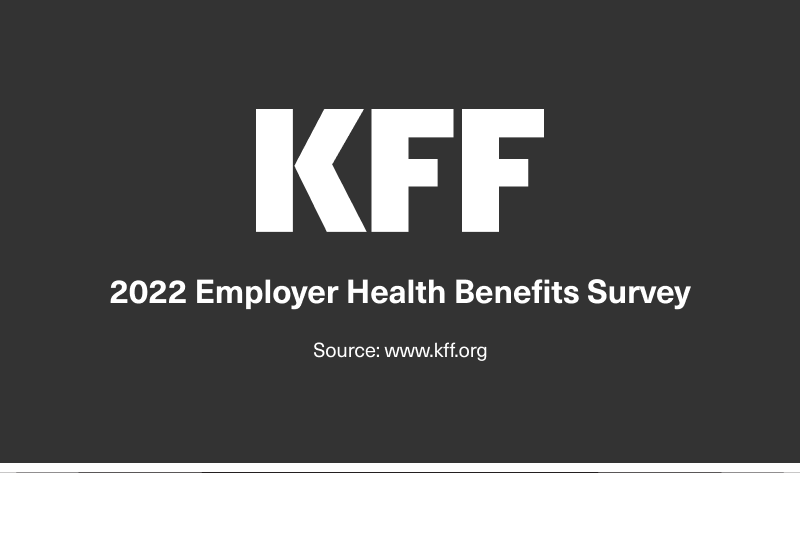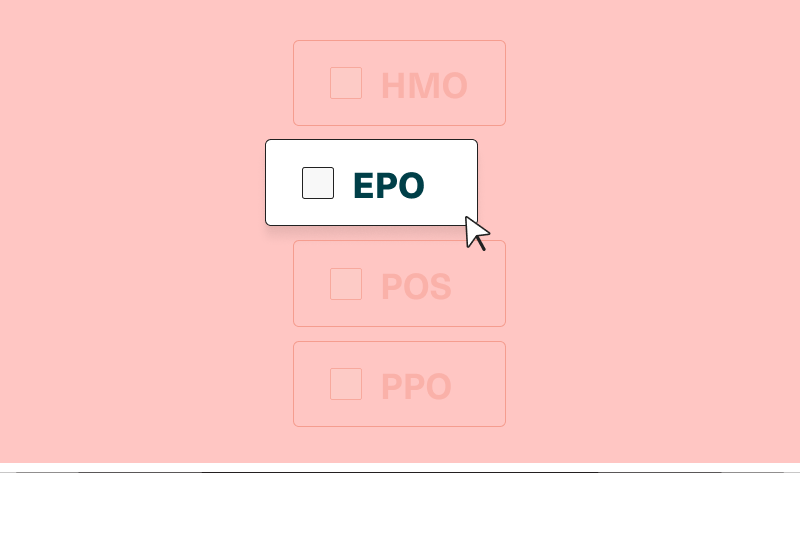2022 KFF Employer Health Benefits Survey: Overview of findings

Kaiser Family Foundation (KFF) has released the results of their benchmark Employer Health Benefits Survey, which aims “to provide a current snapshot of employer-sponsored health benefits.” KFF surveyed private and non-federal public employers with three or more employees.
This year, 2,188 randomly selected employers responded — some offer health benefits, while others do not.
KFF defines small businesses as those with 3 to 199 employees and large businesses as those with 200+ employees.
Below are some key findings from the 2022 KFF Employer Health Benefits Survey.
Health benefits offer rate in 2022
51% of all employers offer some health benefits in 2022, which represents an 8% decrease from last year.
Meanwhile, 93% of firms with 50 or more employees offer health benefits.
The offer rate among businesses with 50+ employees is considerably higher than the overall rate because most firms are very small and significantly less likely to offer health benefits. However, because these small firms employ such a low percentage of workers, the vast majority are employed by firms providing health benefits.
At firms that offer health coverage, 78% of employees are eligible to receive them, though not all eligible employees choose to enroll. In total, 60% of employees at firms that offer health benefits enroll in coverage.
Health insurance premiums in 2022
Premiums are the amount paid by policyholders for health insurance. In 2022, the average annual premiums for employer-sponsored health insurance are:
- $7,911 for single coverage
- $22,463 for family coverage
These average premiums are only slightly higher than in 2021 and do not reflect the high inflation rate, which is expected to impact premium costs more dramatically in 2023.
At small businesses, premiums for single coverage are slightly higher than at large businesses, and premiums for family coverage are marginally lower:
- $8,012 vs. $7,873 for single coverage
- $22,186 vs. $22,564 for family coverage
Employee cost sharing in 2022
Premium cost sharing
On average, covered employees contribute:
- 17% of the premium for single coverage
- 28% of the premium for family coverage
33% of employees at small businesses are enrolled in a plan where the employer pays 100% of the premium for single coverage, compared to 6% of workers in large firms.
However, workers at small firms pay more for family coverage — they contribute 36% of the premium on average, while covered workers at large firms only contribute 26%. Furthermore, 31% of covered workers at small businesses must contribute more than half of the premium for family coverage, compared to 7% of covered workers at large businesses.
This causes the average premium contribution amount for covered workers at small firms to be considerably higher:
- $7,556 for covered workers at small businesses
- $5,580 for covered workers at large businesses
Cost sharing of healthcare services
The annual deductible is the dollar amount an insured person must pay out of pocket for covered services before their health plan starts to pay. For all employees with single coverage, deductible amounts are on the rise. The average annual deductible has increased 17% over the last five years and 61% in the past ten years.
Employees at small businesses face higher deductibles than those at large companies — $2,543 vs. $1,493 on average.
A copayment is a fixed dollar amount the insured must pay every time they see an in-network provider, regardless of whether they have met their deductible. Average copayments in 2022 are:
- $27 for primary care
- $44 for specialty care
Coinsurance is a percentage of the covered service the insured must pay after they’ve met their deductible. Average coinsurance rates in 2022 are:
- 19% for primary care
- 20% for specialty care
Health plan types in 2022
Preferred provider organizations (PPOs) are the most common type of health plan, accounting for 49% of covered employees.
65% of covered workers are enrolled in self-funded plans, in which the employer pays directly for employees’ healthcare. Self-funded arrangements are far more common among large firms than small firms:
- 20% of covered employees at small businesses are enrolled in a self-funded plan.
- 82% of covered employees at large businesses are enrolled in a self-funded plan.
38% of small firms report they have a level-funded plan, a type of self-funded plan in which the employer funds employees’ healthcare but is protected by stop-loss insurance against exorbitant claims. This percentage is similar to 2021 but much higher than years prior to 2021.
Additional benefits in 2022
Wellness benefits
Of those offering health benefits,
- 40% of small firms and 55% of large firms give employees the option of participating in a health risk assessment.
- 24% of small firms and 45% of large firms allow employees to complete a biometric screening.
- 54% of small businesses and 85% of large businesses offer one or more of the following: a smoking cessation program, a weight management program, and/or a behavioral or lifestyle coaching program.
Mental health benefits
Both small and large employers are increasingly attuned to their employees’ mental health needs in 2022. 48% of large employers saw an increase in the share of employees seeking mental health services in 2022, and 43% were concerned with an uptick in substance use conditions among workers.
To address these concerns, many employers offer mental and behavioral health resources. 44% of employers provide self-care apps, and 81% offer an employee assistance program — with large employers being more likely than small employers to offer these benefits.
However, only 44% of all businesses believe there are enough behavioral health providers in their plan networks to provide timely access to services. Therefore, many employers say they are “trying to bolster their provider networks through alternative modes, such as adding new virtual providers.”
Telemedicine benefits
Of firms with 50+ workers offering health benefits,
- 87% of small firms cover some healthcare services through telemedicine.
- 96% of large firms cover some healthcare services through telemedicine.
These percentages are far higher than they were pre-pandemic.
Many small firms only offer telemedicine services only through their health plan, while large firms are more likely to work with a specialized telemedicine provider.
Discover more 2022 employer health benefits trends in Sana’s 2022 SMB Employer Benefits Survey.






